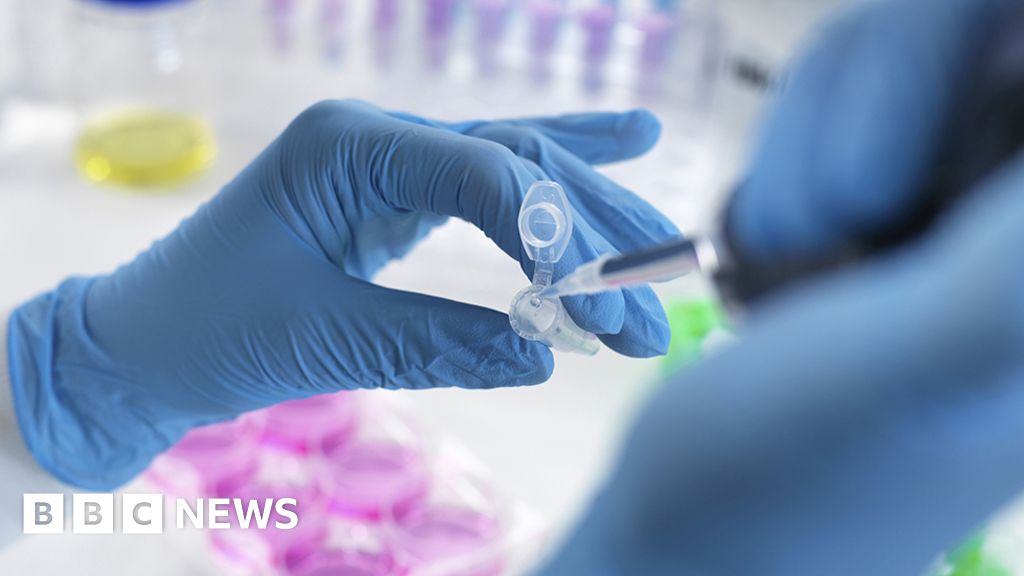- cross-posted to:
- [email protected]
- [email protected]
- cross-posted to:
- [email protected]
- [email protected]
Does this really solve the ethical wicket of human embryo testing? Is tricking stem cells into forming an embryo really that different from fertilizing an egg with a sperm cell to form an embryo? Like, would this still develop into a functional human being if implanted into a womb?
Does this really solve the ethical wicket of human embryo testing?
Subjectively, no. Objectively, yes. Just because it has enough properties to do things similar to an embryo, it has been shown that it is in fact NOT an actual embryo.
Is tricking stem cells into forming an embryo really that different from fertilizing an egg with a sperm cell to form an embryo?
Yes, very much so. Sperm and egg method is you get what you get and you don’t throw a fit. Which is less than ideal if a very narrow line of cells is all that you were interested in. Think of the ethical implications of taking a fetal tissue and indicating, “Oh well 90% of this isn’t what I wanted. Let’s slice that off and focus on this 10% I do want. Oh and freeze that shit I sliced off, someone may want it before it goes bad.” The tricking stem cells allows us to focus efforts so that the yield is much higher on what researchers want.
would this still develop into a functional human being if implanted into a womb?
No. It does not. No one has tried with humans but it’s been tried with primates. The uterus takes the embryo and plays along for a bit of time but after that, the body figures out the ruse and the whole thing comes apart, usually in fetal resorption. So while this method can produce particular lines of cells quite well, there is obvious things that are massively missing form our understanding of ovum to make this remotely successful. Can we overcome that technical deficit? ABSOLUTELY. Will we? Nah, it’s not likely.
Synthetic embryos serve a particular sticking point researchers have about human cell lines. Most governments allow human cell lines to exist for about five weeks (there’s particular exceptions to this that have more asterisks than the TOS for most social media sites, I’ll not go into them, we’re just going to stick to in general here). Thereafter, they must be destroyed. The problem is that if you need a particular line of cells that develops much later in the development stage, you need donor tissue which is much more expensive. With synthetic embryos you can “jump” right to what you need.
So this brings us back to the ethical part of this. Objectively, these cell lines being created by this process come very differently than what we harvest from actual donors. And there’s little likelihood that this process is going to develop much further than great for single targeted cell lines, piss poor for complex tissue/organs/actual humans. So objectively speaking, synthetic embryos today have very little chance to be confused for actual human embryos. Today’s synthetic embryos are just way too dissimilar to actual embryos that I think any ethical concerns are overblown. Yes, it has the name embryo in it, but that is solely a technical distinction and confusing it with actual embryos is a gross misunderstanding of the details.
Subjectively speaking, if I build a ship out of things that look like wood, act like wood, and feels like wood but is indeed not wood, did I build a wood ship? There’s a point where I can make fake wood look real enough that it would be hard to tell if it was wood or not. Likewise, it wouldn’t be impossible to develop synthetic embryos to a point that the body would know no difference between it and a real one. The only problem is that much like our wood thing, there are trees that are way cheaper to just grow and harvest than to sit here literally trying to reinvent the tree. The whole sperm/egg thing is just something nature has had a lot of time to perfect and it’s going to be a very pretty penny to mimic that. And everyone will find that there are very few takers that want to blow that kind of money.
What synthetic embryos solve is a need for particular lines of cells much later in the development phase of a human life. Those cells are expensive to obtain. Synthetic embryos are a cheaper means to getting SOME of them. But if the goal is an actual embryo, you still cannot beat the cost and effectiveness in your run of the mill fertilization. Additionally, if your goal is large amounts of tissue/full organs, likely that 3D printing is going to beat out this technology but until either one of them wins, we still have the expensive and complex system of being an organ donor and waiting till you get a fatal head injury. So synthetic embryos seem to only be able to serve the niche that they are more affordable than the current method. Could they do more? Oh yeah. Will they? Probably not. It was pretty expensive getting to where they are currently at, and going further there just seems to be better methods for the use cases they would serve.
“The researchers stress it would be unethical, illegal and actually impossible to achieve a pregnancy using these embryo models - assembling the 120 cells together goes beyond the point an embryo could successfully implant into the lining of the womb”
Maybe at some point, but what they have now likely wouldn’t become a person.
Please explain what is unethical about this kind of embryo testing where cell differentiation did not happen. It is my understanding that opposition to the actual embryo testing comes from religion. But religion says nothing about this.
Religion can stuff it. Has no reason to be in anything science related.
Hence my request to explain what is unethical here.
Since these reasons for being upset are made up arbitrarily in the first place, whether these new developments trigger them is probably also pretty much arbitrary.
Today’s science has become so advanced because of unethical things that done in the past. I don’t think this one is ethical either, also sounds like some form of cloning.
I thought it sounded like cloning too. I wonder why they didn’t use that word?
Probably the same reason they use the word “model” instead of just calling it an embryo. They don’t want to make it sound like they’re experimenting on an actual human embryo (even though that’s basically what it is). That’s the real ethical question here. At what point does this become experimentation on humans? This also steps into basically the same problem as the abortion debate, which is more heated than I’d like to get here.
This is the type of question that has no definitive answer.
It absolutely does, but those pesky ethics mean no one will try to find out.
No. This is a purely philosophical question.
From a biological standpoint, a re-juvenated stem cell and a freshly fertilized stem cell are identical. But how you interpret this is a completely different question.
Just think about the implications: a clump of your cells are “you”, if you want to kill them, you’re free to do so. However, if someone grows a human from these cells, are you still allowed to do that? Is that suicide or homicide? There’s a line between these two examples and where to draw that is an open question.
There were several questions asked, but the one I was referring to,
Like, would this still develop into a functional human being if implanted into a womb?
Absolutely has a definitive answer that can be figured out.
The article says it is technically impossible to develop in a womb, though I’m not sure why.
The article says the embryo models have a 99% failure rate, and also that it would be impossible to achieve pregnancy with it. Sounds like the process to coax the cells to form an embryo and miscellaneous parts takes too long.
It probably just raises further ethical questions.
So what would happen if it did develop into a full human? Would it be a clone of the stem cell donor?
This one? It would likely have numerous faults in its physical makeup and very probably live a brief, miserable existence. Perfected? It would be a genetic clone.
Enough about me. I want to know if this will be considered the same as Impossible Burger and we can start eating people meat without feeling guilty. Indulge in a taboo! Eat a forearm! I mean, not a real forearm. Actually, sort of.
These ‘humans’ would be literal properly like a dog…goodbye humanity as the ceos would starve us to death like they currently are, and will replace us with slaves they can legally put down (kill) when they feel like it.
This is the best summary I could come up with:
The first weeks after a sperm fertilises an egg is a period of dramatic change - from a collection of indistinct cells to something that eventually becomes recognisable on a baby scan.
Instead of a sperm and egg, the starting material was naive stem cells - reprogrammed to gain the potential to become any type of tissue in the body.
Despite the late-night video call, I can hear the passion as Prof Hanna gives me a 3D tour of the “exquisitely fine architecture” of the embryo model.
The hope is embryo models can help scientists explain how different types of cell emerge, witness the earliest steps in building the body’s organs or understand inherited or genetic diseases.
There is even talk of improving in vitro fertilisation (IVF) success rates by helping to understand why some embryos fail or using the models to test whether medicines are safe during pregnancy.
Prof Alfonso Martinez Arias, from the department of experimental and health sciences at Pompeu Fabra University, said it was “a most important piece of research”.
The original article contains 817 words, the summary contains 174 words. Saved 79%. I’m a bot and I’m open source!
Brave New World incoming










